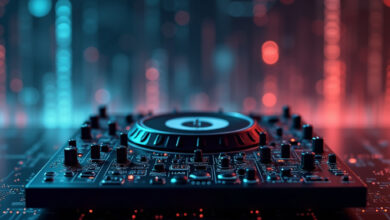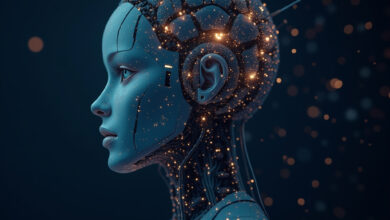Best AI Video Generation Tools HailuoAI video for Creating Realistic Videos

Artificial Intelligence (AI) has revolutionized content creation, particularly in video production. With AI-powered tools, creators can generate realistic videos from text prompts, images, or existing footage, saving time and resources while achieving professional results. These tools leverage advanced machine learning models, natural language processing (NLP), and generative adversarial networks (GANs) to produce high-quality, lifelike videos suitable for marketing, entertainment, education, and social media. This article explores the best AI video generation tools available in 2025, focusing on their capabilities to create realistic videos, their features, limitations, and practical applications.
Why AI Video Generation Matters
The demand for video content is skyrocketing. Studies show that 80% of internet traffic is driven by video, and platforms like YouTube, TikTok, and Instagram thrive on engaging visual content. However, traditional video production is time-consuming, expensive, and requires technical expertise. AI video generation tools address these challenges by:
- Speeding up production: Generate videos in minutes instead of days.
- Reducing costs: Eliminate the need for expensive equipment or studios.
- Enhancing creativity: Allow creators to experiment with ideas without technical barriers.
- Ensuring realism: Produce lifelike visuals that rival human-made content.
Below, we dive into the top AI video generation tools, focusing on their ability to create realistic videos and their unique features.
1. Hailuo AI Video
Overview: Developed by MiniMax, Hailuo AI Video is a leading tool for generating short, realistic videos (up to 6 seconds) from text prompts or images. It excels in creating visually stunning content for social media and advertisements.
Key Features:
- Text-to-Video: Enter a descriptive prompt (e.g., “A serene beach at sunset with waves crashing”) to generate a realistic video.
- Image-to-Video: Transform static images into dynamic videos with motion effects.
- High Quality: Outputs videos at 720p resolution with 25 frames per second (FPS).
- User-Friendly: Simple interface with pre-built templates for beginners.
- Customization: Supports styles like realistic, cinematic, or animated.
Pros:
- Free tier available with limited usage.
- Fast processing (videos generated in 1-3 minutes).
- Ideal for short-form content like TikTok or Instagram Reels.
Cons:
- Limited to 6-second videos.
- Interface primarily in Chinese, requiring translation tools for non-Chinese users.
- Occasional inconsistencies in complex scenes.
Use Case: A marketer can use Hailuo AI to create a quick promotional video for a beach resort by inputting a text prompt describing the scene, saving hours of filming and editing.
2. Runway Gen-2
Overview: Runway Gen-2 is a versatile AI video generation platform known for its ability to create realistic and cinematic videos. It supports text-to-video, image-to-video, and video-to-video workflows.
Key Features:
- Multi-Modal Inputs: Generate videos from text, images, or existing videos.
- Advanced Editing: Tools for inpainting, outpainting, and motion tracking.
- High Resolution: Supports up to 1080p output.
- Creative Control: Adjust camera angles, lighting, and motion paths.
- Collaboration: Cloud-based platform for team projects.
Pros:
- Highly realistic outputs suitable for professional use.
- Extensive editing tools for post-processing.
- Regular updates with new AI models.
Cons:
- Paid plans required for advanced features.
- Steep learning curve for beginners.
- Processing times can be slow during peak usage.
Use Case: A filmmaker can use Runway Gen-2 to create a realistic chase scene by combining a text prompt with an existing video clip, then refining the output with editing tools.
3. Synthesia
Overview: Synthesia specializes in creating realistic AI-generated videos featuring virtual avatars. It’s widely used for corporate training, presentations, and marketing videos.
Key Features:
- AI Avatars: Choose from diverse, lifelike avatars or create custom ones.
- Text-to-Speech: Supports over 120 languages with natural-sounding voices.
- Script-to-Video: Input a script to generate a video with an avatar delivering it.
- Branding: Add logos, colors, and custom backgrounds.
- Integration: Works with PowerPoint and other tools.
Pros:
- Highly realistic avatars that mimic human expressions.
- Easy to use for non-technical users.
- Scalable for businesses with bulk video needs.
Cons:
- Limited to avatar-based videos, not general scenes.
- Subscription costs can be high for small creators.
- Less creative flexibility for non-corporate use.
Use Case: A company can create a multilingual training video by inputting a script into Synthesia, selecting an avatar, and customizing the background to match their brand.
4. Pika.art
Overview: Pika.art is a user-friendly AI video tool designed for creators who want to produce realistic and stylized videos quickly. It’s popular for social media and artistic projects.
Key Features:
- Text-to-Video: Generate videos from simple or detailed prompts.
- Style Transfer: Apply artistic styles (e.g., Pixar, anime) to realistic videos.
- Lip Sync: Add realistic lip movements to animated characters.
- Fast Rendering: Videos generated in under a minute.
- Community: Active user community for sharing prompts and tips.
Pros:
- Intuitive interface for beginners.
- Affordable pricing with a free tier.
- Versatile for both realistic and stylized content.
Cons:
- Limited video duration (up to 10 seconds).
- Lower resolution compared to competitors (720p max).
- Occasional artifacts in complex scenes.
Use Case: A social media influencer can use Pika.art to create a realistic video of a dancing avatar synced to a trending song, perfect for TikTok.
5. Kaiber
Overview: Kaiber is an AI video platform focused on creating music-driven and realistic videos. It’s popular among musicians and content creators for producing visually captivating content.
Key Features:
- Audio-to-Video: Generate videos synced to music or soundtracks.
- Text-to-Video: Create realistic scenes from text prompts.
- Motion Effects: Advanced tools for smooth transitions and camera movements.
- Customization: Adjust colors, lighting, and textures.
- Export Options: Supports multiple formats for social media.
Pros:
- Excellent for music videos and rhythmic content.
- High-quality, realistic visuals.
- Flexible for both short and longer videos (up to 30 seconds).
Cons:
- Requires a paid subscription for full access.
- Music sync feature can be inconsistent.
- Limited language support for text prompts.
Use Case: A musician can use Kaiber to create a realistic music video by uploading a song and a text prompt describing a futuristic cityscape, syncing visuals to the beat.
Tips for Creating Realistic AI Videos
To maximize the realism of AI-generated videos, consider these best practices:
- Craft Detailed Prompts: Use specific, descriptive language in text prompts (e.g., “A young woman jogging in a lush forest at dawn, with soft sunlight filtering through trees”).
- Use High-Quality Inputs: For image-to-video tools, upload clear, high-resolution images.
- Experiment with Styles: Test different rendering styles (realistic, cinematic) to find the best fit.
- Iterate and Refine: Generate multiple versions and tweak prompts to improve results.
- Post-Process: Use editing software like Adobe Premiere or Runway’s tools to polish AI outputs.
- Optimize for Platform: Tailor video length and aspect ratio to the target platform (e.g., 9:16 for Instagram Stories).
Challenges and Limitations
While AI video generation tools are powerful, they have limitations:
- Short Durations: Most tools are limited to 6-30 seconds, making them less suitable for long-form content.
- Inconsistencies: Complex scenes with multiple characters or intricate movements may produce artifacts.
- Processing Times: High demand can lead to delays, especially on free tiers.
- Ethical Concerns: AI-generated videos raise issues like deepfakes and copyright disputes.
- Language Barriers: Some tools (e.g., Hailuo AI) have interfaces in non-English languages, requiring workarounds.
Future of AI Video Generation
The field of AI video generation is evolving rapidly. By 2026, we can expect:
- Longer Videos: Tools will support videos exceeding 1 minute.
- Higher Resolutions: 4K and 8K outputs will become standard.
- Real-Time Generation: Instant video creation for live applications.
- Ethical Safeguards: Improved detection of AI-generated content to prevent misuse.
- Integration with AR/VR: AI videos will power immersive experiences.
Comparison of Free vs Paid Plans for AI Video Generation Tools
Below is a detailed comparison table of the free and paid plans for five leading AI video generation tools—Hailuo AI, Runway Gen-2, Synthesia, Pika.art, and Kaiber. The table includes information on whether each tool has a mobile application, along with links to the official websites and available apps.
| Tool | Free Plan | Paid Plan | Mobile App | App Link | Official Website |
|---|---|---|---|---|---|
| Hailuo AI | – Unlimited generation for 3 days – 720p resolution, 6-second videos – Text-to-video and image-to-video – Watermark on videos – Limited daily credits after trial |
– Starts at $9/month for 1,000 credits – No watermarks – Bonus daily login credits – Higher resolution options |
Yes (iOS) | Hailuo AI on App Store | hailuoai.video |
| Runway Gen-2 | – 125 free credits (limited generations) – 720p resolution – Text-to-video and image-to-video – Watermark on exports – Limited feature access |
– Starts at $12/month (Standard plan) – Up to 4K resolution – No watermarks – Advanced features (e.g., Motion Brush, lip-sync) – API access available |
Yes (iOS) | Runway on App Store | runwayml.com |
| Synthesia | – No free plan, but offers a free demo – Limited to test videos with watermarks – Access to basic avatars and templates |
– Starts at $22/month (Personal plan) – 10+ minutes of video/month – 240+ avatars, 140+ languages – No watermarks – Custom avatars available |
No | N/A | synthesia.io |
| Pika.art | – 250 credits upon signup (~16 videos) – 30 credits/day after initial credits – 720p resolution – Text-to-video and image-to-video – Watermark on free plan |
– Starts at $9.99/month (Basic plan) – 1080p resolution – No watermarks – Access to Pika 2.1 features (e.g., Scene Ingredients) – Longer videos (up to 10 seconds) |
Yes (iOS) | Pika on App Store | pika.art |
| Kaiber | – Free trial with limited credits – 720p resolution – Text-to-video and audio-to-video – Watermark on videos – Limited access to styles |
– Starts at $10/month (Creator plan) – 1080p resolution – No watermarks – Advanced motion animation – Longer videos (up to 30 seconds) |
Yes (iOS) | Kaiber on App Store | kaiber.ai |
Notes:
- Free Plan Limitations: Free plans typically include watermarks, lower resolution (720p), and restricted access to advanced features like lip-syncing, high-resolution outputs, or custom avatars.
- Paid Plan Benefits: Paid plans offer higher resolutions (up to 1080p or 4K), watermark removal, and access to premium features like extended video durations, advanced editing tools, and API support.
- Mobile Apps: Most tools (except Synthesia) offer iOS apps, with some planning Android releases. Check the official websites for updates on Android availability.
- Pricing Variability: Prices are subject to change, and some tools offer tiered plans (e.g., Standard, Pro, Enterprise). Visit the official websites for the latest pricing details.
- API Access: Tools like Runway and Hailuo AI offer API access with paid plans, ideal for developers or businesses automating workflows.
For the most up-to-date information, visit the official websites or contact the providers directly.




